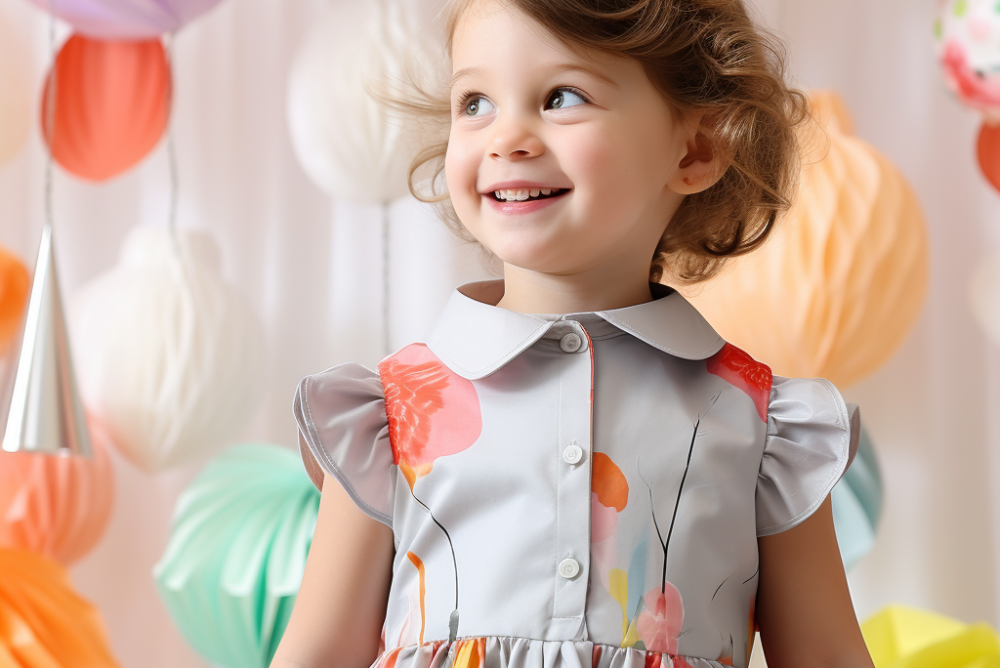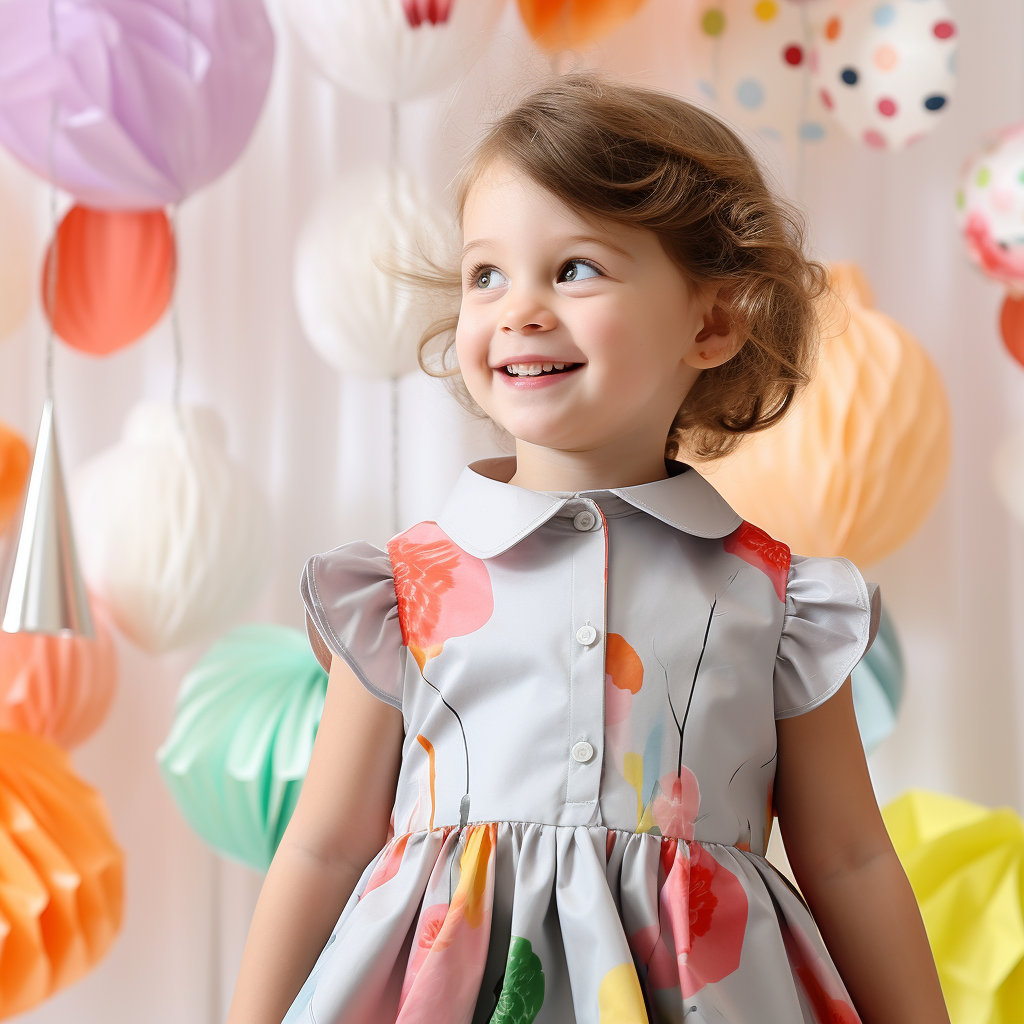Selecting Fabrics for Children's Wear: A Comprehensive Guide


When it comes to manufacturing children's clothing, one of the most critical decisions lies in choosing the right fabric. Children have unique needs, different from adults, in terms of comfort, safety, and wear. For manufacturers, the chosen fabric can make or break the success of a clothing line, both in terms of sales and the brand's reputation.
Children's sensitive skin, their active lifestyles, and their rapid growth rate play essential roles in fabric selection. Beyond that, modern parents and caregivers are more informed than ever before. They seek clothing options that are durable, environmentally responsible, and cost-effective. In light of this, understanding the range of available fabrics and their properties is crucial.
Understanding the Needs of Children: Comfort and Safety
Children's skin is delicate, often prone to irritation and allergic reactions. As a result, the fabric chosen for their clothing needs to prioritize comfort and safety. Furthermore, children are constantly on the move, exploring their world with boundless energy. This active nature means that the material needs to be both breathable and flexible.
- Breathability: Fabrics that allow air to circulate prevent excessive sweating, which can lead to discomfort and skin rashes. This is particularly crucial in hot or humid climates.
- Flexibility: As children grow and move, they require materials that can stretch and move with them, accommodating their spontaneous activities without restricting them.
- Non-Toxic Dyes: Children tend to be more exposed to the risks of harmful chemicals. Using non-toxic dyes and ensuring that fabrics are free from harmful finishes is a must.
Key Fabric Types Suitable for Children's Clothes
- Cotton
A classic choice, cotton is soft, breathable, and relatively affordable. Its natural fibers mean it's less likely to cause allergic reactions. Pure cotton is ideal for summer clothing, while its blends can offer more durability.
- Benefits: Highly breathable, soft on the skin, and versatile.
- Drawbacks: Can shrink if not cared for properly; some cotton types can wrinkle easily.
- Bamboo
Bamboo is becoming increasingly popular due to its soft texture and eco-friendly attributes. It's naturally antibacterial and hypoallergenic, making it perfect for sensitive skin.
- Benefits: Sustainable, hypoallergenic, and offers UV protection.
- Drawbacks: More expensive than other fabrics; can be less durable if not blended with other materials.
- Polyester
A synthetic fiber, polyester is known for its strength and durability. It's commonly blended with natural fibers to enhance the fabric's durability.
- Benefits: Durable, wrinkle-resistant, and retains its shape.
- Drawbacks: Less breathable than natural fibers; can be uncomfortable in very hot conditions.
- Wool
Wool is a natural insulator, perfect for colder climates. Merino wool, in particular, is favored for children's clothing due to its finer, softer texture.
- Benefits: Warm, water-resistant, and naturally flame-retardant.
- Drawbacks: Can be itchy for some children; requires careful washing.
- Modal
Made from beech tree fibers, Modal is known for its softness and shine. It's often used in pajamas and undergarments due to its silky texture.
- Benefits: 50% more absorbent than cotton, resistant to shrinkage, and remains soft after multiple washes.
- Drawbacks: Weaker when wet; some environmental concerns regarding its production.
Selecting the right fabric type is an interplay between the garment's intended use, the target price point, and the specific needs of the end consumer. By understanding the characteristics of each material, manufacturers can make decisions that align with consumer expectations and demands.

The Importance of Hypoallergenic Materials
Children, especially infants, are more susceptible to allergies, irritations, and skin conditions like eczema. This makes it imperative for manufacturers to consider hypoallergenic materials. Such fabrics are less likely to cause allergic reactions as they are designed to minimize the possibility of an allergic response.
- Benefits: Reduced risk of skin irritations, rashes, and allergic reactions. Enhances brand trustworthiness by prioritizing child safety.
- Considerations: Not all "hypoallergenic" labels are genuine. It's essential to verify the authenticity of such claims, ensuring that the fabric has undergone proper testing.
Considering Durability: Fabrics that Stand the Test of Time
Children are notoriously hard on their clothing. From spills and stains to tears and wears from constant movement, the fabric must withstand the rigors of childhood. Durability is not just about wear and tear; it also concerns retaining shape, color, and overall appearance after multiple washes.
- Benefits: Longer-lasting garments mean satisfied customers and fewer returns. It also implies value for money, enhancing brand reputation.
- Considerations: While durability is crucial, it shouldn't come at the cost of comfort. Finding a balance is key.
Environmental Impact and Sustainable Choices
Today's consumers are more environmentally conscious. There's a growing demand for sustainable products, including children's clothing. Manufacturers need to consider the environmental footprint of their fabric choices, both in terms of production and the entire product lifecycle.
- Benefits: Aligning with eco-friendly practices can attract a broader customer base and can often justify a higher price point.
- Considerations: Transparency is vital. Any claims regarding sustainability should be backed by concrete data and certifications to maintain trust.
Cost-Effectiveness for Manufacturers
While the ideal fabric should tick all boxes regarding comfort, safety, and sustainability, the cost is an unavoidable consideration. Manufacturers need to evaluate the cost of materials against the intended retail price, ensuring profitability without compromising on quality.
- Benefits: Optimal cost management can lead to competitive pricing, attracting a larger customer base.
- Considerations: A cheaper initial cost might lead to more returns or reduced customer loyalty if the quality is compromised.
Making Informed Decisions: Consumer Feedback and Market Trends
Staying attuned to consumer feedback is paramount. It offers real insights into the actual performance of fabrics once they're out in the market. Additionally, understanding market trends can help manufacturers anticipate shifts in consumer preferences.
Benefits: Direct feedback can guide tweaks in fabric choices for future collections. Adapting to trends can position a brand as forward-thinking and relevant.
Considerations: While trends offer direction, core brand values and product quality should not be compromised for fleeting market fads.
In the ever-evolving world of children's clothing, manufacturers must make choices that balance various factors, from material properties to cost considerations and market demands. By centering decisions on the well-being and comfort of children, and by staying informed and adaptable, manufacturers can create products that resonate with consumers and stand the test of time.
Conclusion
Children's clothing is more than just miniature versions of adult apparel. The unique needs of children, combined with the discerning expectations of modern parents and caregivers, make fabric selection a nuanced decision. Manufacturers must juggle various concerns: the tactile comfort of the material, its durability under the rigors of play, its environmental footprint, and its cost-effectiveness.
In this guide, we've explored a range of fabrics suitable for children's clothing, weighing the benefits and drawbacks of each. But beyond the characteristics of individual materials, there's a broader narrative at play. Today's consumer is well-informed, value-driven, and often, environmentally conscious. This calls for manufacturers to not only produce quality garments but also to be transparent in their practices and claims.
By placing children's well-being at the forefront and marrying it with market insights, manufacturers can make informed fabric choices. Such decisions will not only cater to immediate consumer needs but will also build a foundation of trust and loyalty in the long run.
The landscape of children's apparel is dynamic, driven by both timeless needs and evolving trends. Manufacturers who invest the time to understand these nuances, and who prioritize genuine value over shortcuts, will find themselves in a position to lead, innovate, and flourish.





-500x500.jpg)
-500x500.jpg)
-500x500.jpg)
-500x500.jpg)
-500x500.jpg)